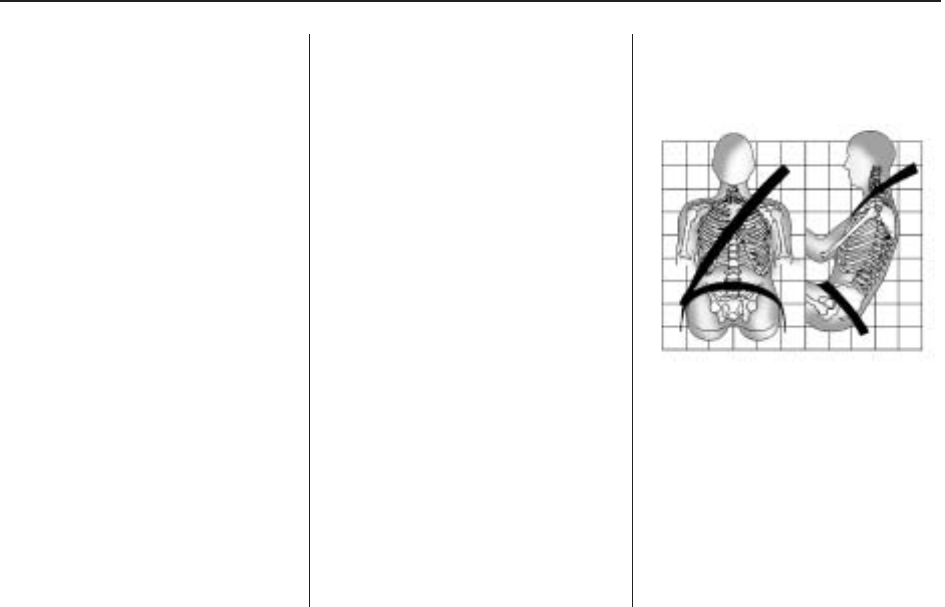
Q: If I am a good driver, and I
never drive far from home,
why should I wear safety
belts?
A: You may be an excellent driver,
but if you are in a crash — even
one that is not your fault — you
and your passenger(s) can be
hurt. Being a good driver does not
protect you from things beyond
your control, such as bad drivers.
Most accidents occur within
25 miles (40 km) of home. And
the greatest number of
serious injuries and deaths occur
at speeds of less than 40 mph
(65 km/h).
Safety belts are for everyone.
How to Wear Safety Belts
Properly
This section is only for people of
adult size.
Be aware that there are special
things to know about safety
belts and children. And there are
different rules for smaller children
and infants. If a child will be riding in
the vehicle, see Older Children on
page 1-22 or Infants and Young
Children on page 1-25. Follow those
rules for everyone’s protection.
It is very important for all occupants
to buckle up. Statistics show that
unbelted people are hurt more often
in crashes than those who are
wearing safety belts.
Occupants who are not buckled up
can be thrown out of the vehicle
in a crash. And they can strike
others in the vehicle who are
wearing safety belts.
First, before you or your
passenger(s) wear a safety belt,
there is important information
you should know.
Sit up straight and always keep your
feet on the floor in front of you.
The lap part of the belt should be
worn low and snug on the hips, just
touching the thighs. In a crash,
this applies force to the strong pelvic
bones and you would be less
likely to slide under the lap belt. If
you slid under it, the belt would
apply force on your abdomen. This
could cause serious or even
Seats and Restraint System 1-13


















